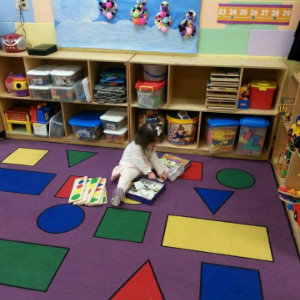 The number ten is the basis of most counting systems throughout history, most likely because we have ten fingers. Because of that, young children are often taught how to count in groups of ten. To help your preschooler learn how to count, some of the most effective tools are:
The number ten is the basis of most counting systems throughout history, most likely because we have ten fingers. Because of that, young children are often taught how to count in groups of ten. To help your preschooler learn how to count, some of the most effective tools are:
- Books
- Songs/Videos
- Games (electronic/non-electronic)
Books
As always, one of your best resources is the local librarian. Ask him or her what books preschoolers seem to like especially well when learning how to count. You can also look at the variety of counting-to-ten books available on Amazon and read the reviews about ones that interest you.
You can then buy books that appeal to you – or check them out from the local library first to kid-test them. Goodreads is another popular resource to use when determining which counting books are the most popular and effective.
Advantages of books:
- They are easily portable and can entertain your little one during car rides.
- If your child is a visual learner, this is a useful method.
- If your child needs repetition to learn, books are effective.
- They make great bedtime stories to reinforce the day’s learning in a fun way.
Songs/Videos
Songs are a fun way for your child to practice counting by himself/herself – or by singing along with friends and family members. Thanks to YouTube, you can easily experiment with numerous counting videos to see which ones grab your preschooler’s attention. Some options include:
- Ten in the Bed
- Let’s Count up to Ten
- Numbers for Kids
- Let’s Count 1 to 10 (this one includes simple and fun movements, too)
Advantages of songs and videos:
- If your child is an auditory learner, songs make good sense.
- With YouTube, your child’s attention can be captured by the bright colors and other fun visual elements that add to the learning process.
- Songs can be sung anywhere, including in the car, the bathtub and/or on walks.
- If your child needs repetition to learn, songs are also effective.
Games
If you like teaching your child through interactive online games, here are some options for counting:
If you’d prefer to make your own games, ones that don’t require a computer or Internet connection, Education.com has several ideas. Ones that grabbed our attention include:
- Fishing for Numbers: to create this game, you’ll make ten fish out of brightly colored construction paper, numbering each one. You’ll then set up a fishing game using a fishing rod made of a dowel, string and magnet. Each fish will have a paper clip in its mouth – and then you can tell your child which fish to catch.
- Name that Number: you’ll think of a number from one to ten, and ask your child to randomly guess. Then, give clues such as “higher” or “lower” until your child guesses the correct number. As he or she becomes more proficient with counting, you can expand the range of numbers involved in the game.
- Rubber Stamp Flashcards: get your child involved in creating counting flashcards, and he or she will most likely be even more engaged in learning numbers that way.
The advantage that games have is how interactive they are. If that’s how your child learns best, then, great! Whatever method works well is the one you should choose – and, often, a mixture of methods works best.
Looking for more ways to provide educational opportunities for your child? Find out more about our affordable quality care in the following Northeast Ohio locations where we make age-appropriate learning fun.






